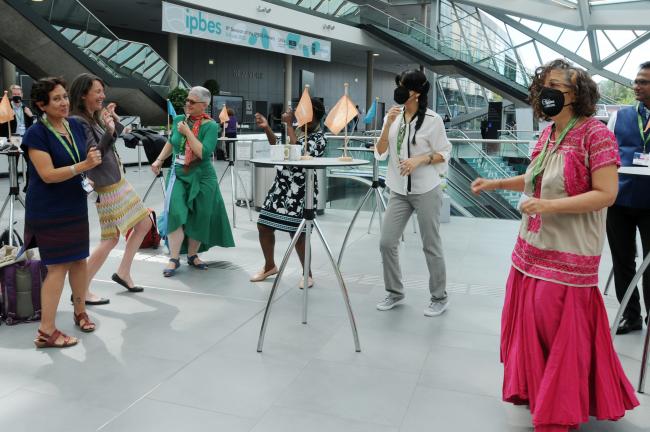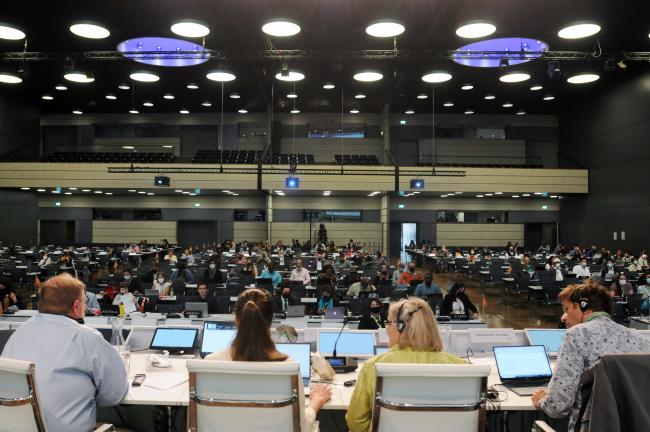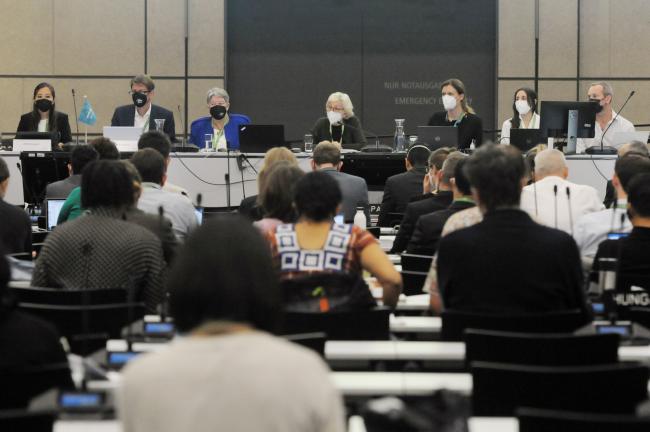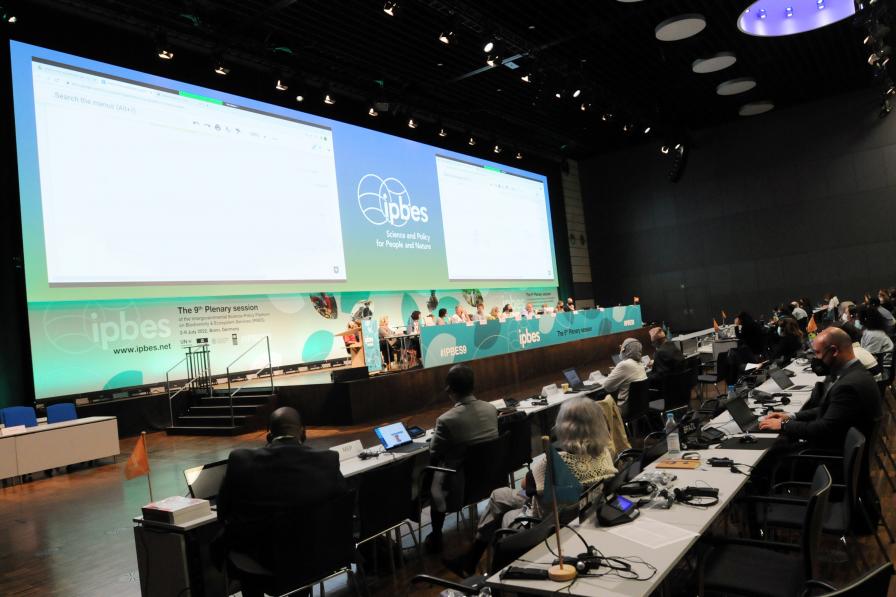As most marathon runners can attest, the final stretch is the toughest. That is because in that stretch one exerts most effort; the legs are collapsing, the lungs are pumping, the body runs out of glycogen. Runners call it “hitting a wall.”
At various points during the day, Working Group 1 (WG1) looked like it was hitting a wall in its consideration of the assessment of the sustainable use of wild species. What started as a “one-hour wrap up to allow the next assessment to begin its work” ended up being a test of endurance as delegates devoted eight consecutive hours to negotiating the document.
To dive deeper, read the full Earth Negotiations Bulletin daily report.
Skipping lunch to continue discussions was a good testament of participants’ devotion and tenacity. Although, as Co-Chair Douglas Beard stressed, this was not always accompanied by the highest degree of efficiency, the final outcome was satisfactory. After the afternoon session ended, white smoke came out of the New York Room at the World Conference Center in Bonn. WG1 was able to reach initial agreement on the summary for policymakers of the sustainable use assessment and forwarded it to plenary, which will address it on Thursday afternoon for final approval.
The discussion took place in a collegial spirit; this, however, did not impede disagreements on different issues in the document. This was to be expected as, in the words of a delegate, “There is a reason why the stuff we leave behind during the first reading are difficult to solve; they are the most controversial ones.” Still, compromises were made and the group was able to reach consensus.
The final clap and the accompanying enthusiasm, despite fatigue and some irritation about a last-minute controversy over the inclusion of a figure, left most delegates joyful and optimistic. Some, however, expressed concerns, including regarding “language from economics creeping up into the text, which,” they insisted “is bad news for biodiversity.” Others positioned themselves at the opposite spectrum, emphasizing that “taking into account economic considerations is the appropriate, if not the only, way to approach an assessment of sustainable use.”
A veteran noted that the assessment’s value will ultimately be decided based on its uptake by policymakers and the interest it attracts within and beyond the biodiversity community. “It is hard to ignore the wealth of information it contains and its high quality,” she noted, opining that “Once more, IPBES got it right.”
Despite the fact that most delegates were satisfied with the result and the excellent timing of an offer of a “happy hour” by the German hosts, there was little time for celebration. WG1, after a brief hour-long break, dived into the second assessment on its agenda. The methodological assessment regarding the diverse conceptualization of multiple values of nature and its benefits, including biodiversity and ecosystem functions and services, is expected to be at least equally demanding and important.
WG2 devoted the day to the scoping report for the methodological assessment of the impact and dependence of business on biodiversity and nature’s contributions to people. The assessment aims to categorize how business depends on, and impacts, biodiversity and identify criteria and indicators for measuring that dependence and impact, while also integrating such metrics into other aspects of sustainability.
Describing the aim is way easier than agreeing to it, as delegates found out during the day. Discussions on the assessment’s scope and rationale generated a lengthy debate and agreement could not be reached. On the ways business depend on biodiversity, some wanted lists of items that the authors should consider, while others found such lists superfluous. References to the climate “crisis” could not be agreed upon and suggestions to enhance compliance at the national level with international environmental law generated passionate reactions.
Despite the challenges, as the work progressed, it increasingly looked like the scoping report could provide a good basis for the assessment. “Agreeing on a scoping report is no easy task,” a delegate offered. “While it looks straightforward, there is a delicate balance we need to strike, including all the topics to be considered without being overly prescriptive.”
All ENB photos are free to use with attribution. For photos from IPBES-9, please use: Photo by IISD/ENB | Diego Noguera.
To receive free coverage of global environmental events delivered to your inbox, subscribe to the ENB Update newsletter.

































